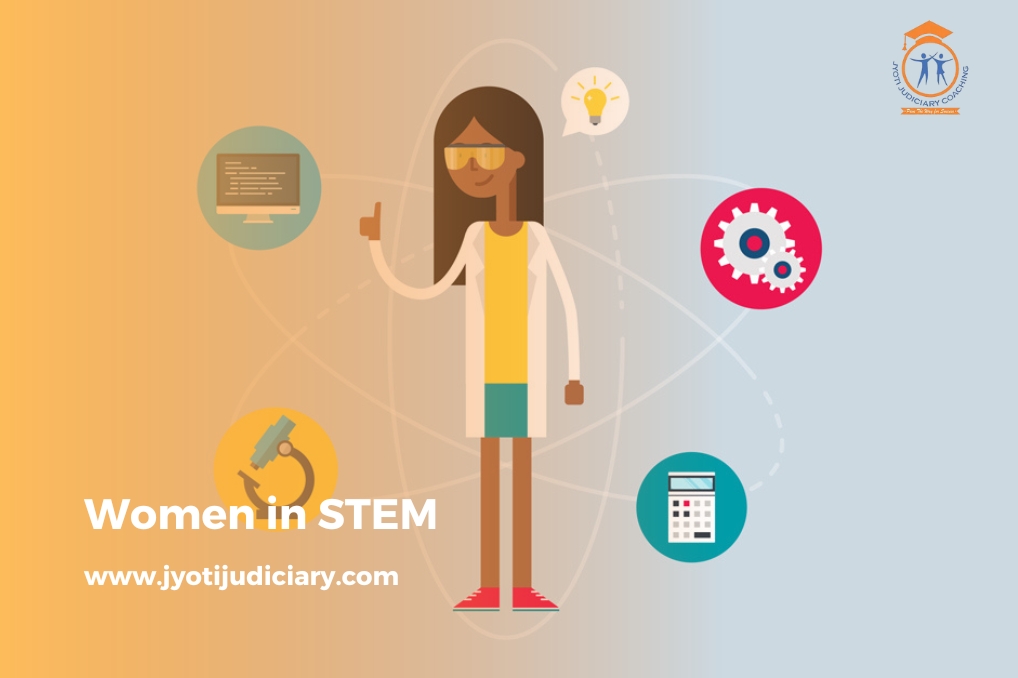
STEM (science, technology, engineering, and mathematics) is a fast-paced area where women are developing into leaders, innovators, and trailblazers. Women are propelling progress and reshaping the years to come in industries that were previously controlled by males, from busting through glass hurdles to dispelling preconceptions. While we recognize their successes, we also must take into account the challenges that they’ve conquered and the advancements they’ve made in opening doors for more women in STEM fields in the years to come.
What is a Stem?
- STEM aims to prepare elementary and secondary students for careers in science, technology, engineering, and math as well as for postsecondary education.
- Apart from teaching subjects-specific knowledge, STEM tries to develop critical thinking, reasoning, and teamwork abilities.
What is Stem Education?
- The term “STEM education” describes the study of these subjects using both a theoretical and practical perspective.
- A STEM curriculum is developed to give students as much real-world exposure and experience as possible in a specific profession.
- It provides an ideal combination of course modules with a few required lab assignments and group projects, which support learning by putting theoretical knowledge into practice.
Women in STEM: About
- Around the world, there has always been a sizable gender disparity in STEM fields (science, technology, engineering, and mathematics).
- Women in science and engineering are still underrepresented in these sectors even though they have made enormous strides toward increasing their participation in higher education.
- In addition, just 12% of members of national science academies are women, despite the fact that women in stem programs make up 33.3% of all researchers and receive lesser research funds than their male counterparts.
- Just 22% of specialists in cutting-edge sectors like artificial intelligence are women.
- Even in the Fourth Industrial Revolution, women in science and technology still make up only 28% of engineering graduates and 40% of computer science and informatics graduates, despite a skills gap in most of these technological sectors.
- In general, female researchers have shorter, less rewarding careers. Their work is frequently overlooked for promotion and is underrepresented in prestigious journals.
Women in Stem Organizations: Importance
- For women in India, STEM education is essential because it gives them equal chances to succeed in professions that have historically been controlled by men.
- STEM education gives females in stem a solid foundation in science, technology, engineering, and math. This foundation helps them think critically and solve problems, which in turn sparks creativity and invention.
- Additionally, women for stem who have a STEM degree are better equipped to meet the needs of the quickly changing labour market, where having expertise in these fields is highly valued.
Women and Stem: Challenges Faced
- Even with the advancements, women in India continue to encounter several obstacles and difficulties when attempting to pursue STEM degrees.
- There are several reasons why women are underrepresented in STEM disciplines, including ingrained gender inequality, a lack of infrastructure and resources, and restricted access to high-quality education.
- In addition, women are frequently deterred from pursuing STEM occupations by societal expectations and pressure to adhere to traditional gender norms.
Women in Stem: Important Initiatives
- Numerous programs have been developed in India to close the gender gap in STEM professions, realizing the importance of empowering girls via education in these fields.
- Girls Who Code and STEMinism, two Indian organizations, are devoted to giving girls access to high-quality STEM education as well as opportunities.
- These organizations encourage and inspire girls to pursue STEM careers by providing mentorship programs, scholarships, and coding workshops.
When females in India are given equal opportunities to succeed in science, technology, engineering, and math, STEM education has the capacity to completely change their lives. India is producing a generation of gifted and powerful women who will determine the nation’s future by shattering gender stereotypes and encouraging girls to follow their talents in STEM.
Governments and international organizations should make sure the following is in place to support women’s participation in STEM fields:
- Give women and girls the abilities and self-assurance they need to excel in math and science.
- Boost STEM instruction and provide early childhood education support for girls.
- Strive to entice, hire, and keep women in STEM-related disciplines and majors at schools and universities.
- Enhance the processes for hiring, retaining, and promoting employees as well as intentionally inclusive cultures.
- Smaller adjustments made by the computer science and physics departments, such as giving introductory courses a more comprehensive introduction to the subject, can have a significant impact on attracting and retaining female students.
Women in STEM FAQs
What are the benefits of women in stem?
Increased women involvement in STEM will boost these fields’ ability, creativity, workforce, and strength by double. It guarantees gender-neutral compensation, flexible work schedules, and women’s empowerment.
What are 3 benefits of STEM?
- encourages parity in the educational setting.
- enhances critical thinking.
- encourages originality.
- promotes independent research into the subject.
Why do we need more women in science?
The new viewpoint that female scientists provide to the profession is vital for fostering innovation and advancement. They are able to approach scientific problems in different ways because of their varied experiences and backgrounds, which results in new discoveries and inventions.
What are women in STEM full form?
Women in STEM (science, technology, engineering, and mathematics) are essential to the advancement of knowledge and the spark of creativity in a wide range of industries.
What does STEM mean?
Science, Technology, Engineering, and Mathematics are four closely related fields of study that are commonly referred to by their acronym, STEM. Because of their shared theoretical and practical characteristics, the fields are frequently linked together.
What is STEM engagement?
In the field of scientific communication, “two-way” techniques to organize and facilitate interactions between STEM professionals and various “publics” that take into consideration those audiences’ backgrounds and understanding are increasingly referred to as “engagement.”
What are the basic facts about STEM?
Encouraging students to apply science, technology, engineering, and math in contexts that create connections between school, community, work, and the global enterprise, STEM is an interdisciplinary approach to learning that combines rigorous academic concepts with practical lessons.
How many women participate in STEM in India?
43.2% of the approximately 9.5 million students who enrolled in STEM degrees in 2021 were female, according to the most recent All-India Survey on Higher Education (AISHE).
Why is there a gender gap in STEM?
The gender gap in STEM has been associated with numerous persistent and deeply ingrained realities. Stereotypes about STEM areas being exclusively associated with men still exist, which might deter girls and women from choosing STEM education and careers.
Why are women in STEM?
Better scientific as well as financial outcomes can also result from educating, developing, and employing more women and other groups that are underrepresented in STEM fields. This is due to the fact that a more diverse workforce results in a wider range of viewpoints and ideas, which can offer businesses a competitive advantage.
Why is it important for women to be in stem?
Women can develop self-confidence and learn that their ideas are worthy and powerful through STEM education. Women’s’ involvement in STEM education also increases their employment prospects in rapidly expanding fields, improving economic prospects for women, their families, and their communities.
How to reduce gender bias in STEM?
- Introduce females to STEM subjects at an early age.
- Urge them to go into science and math as careers.
- Girls should be taught about the achievements of women in STEM fields to help challenge the narrow-minded views of society.
- Face your own prejudice, whether conscious or unconscious, towards women in STEM fields.
With the goal of giving students the best coaching available for law entrance exams including the CLAT, AILET, and various other numerous state judiciary exams, Jyoti Judiciary Coaching, India’s Finest educational Platform, was established. Come enrol now with Jyoti Judiciary!
For any latest news, legal topics, judiciary exams notifications, patterns, etc watch Jyoti Judiciary’s YouTube channel for legal videos for any updates at https://youtube.com/@jyotijudiciarycoaching4852?si=2cwubh9d2A9urwJf









